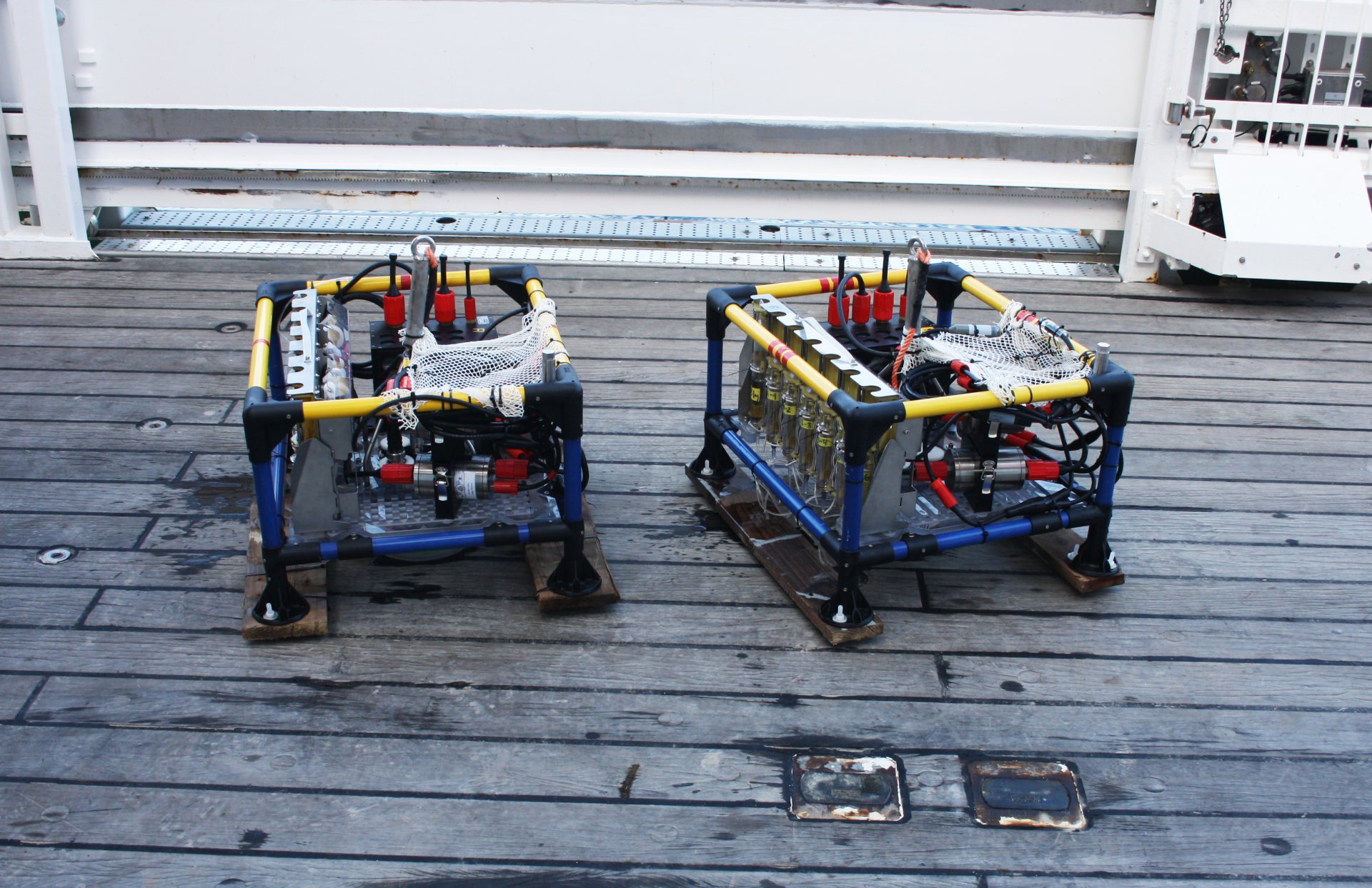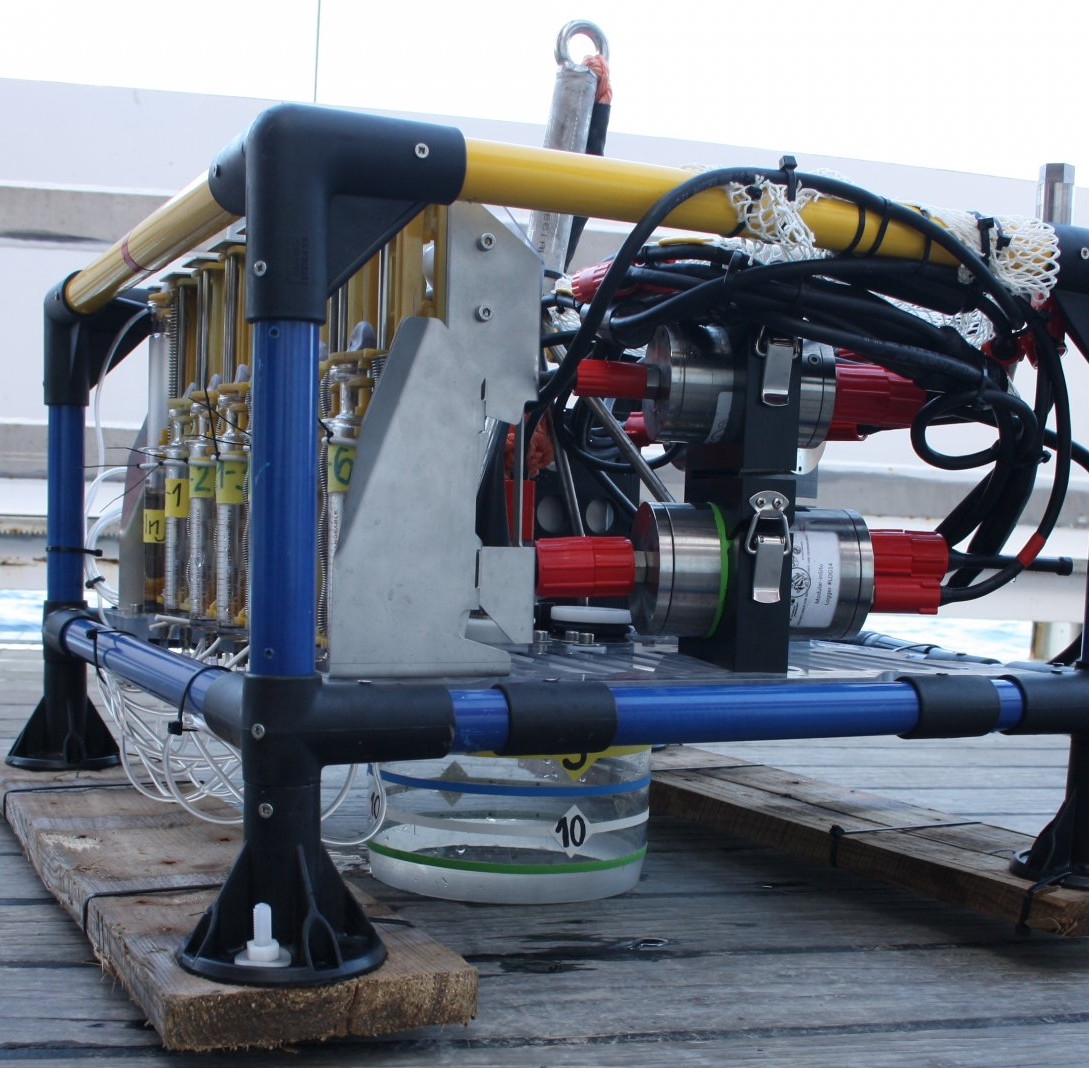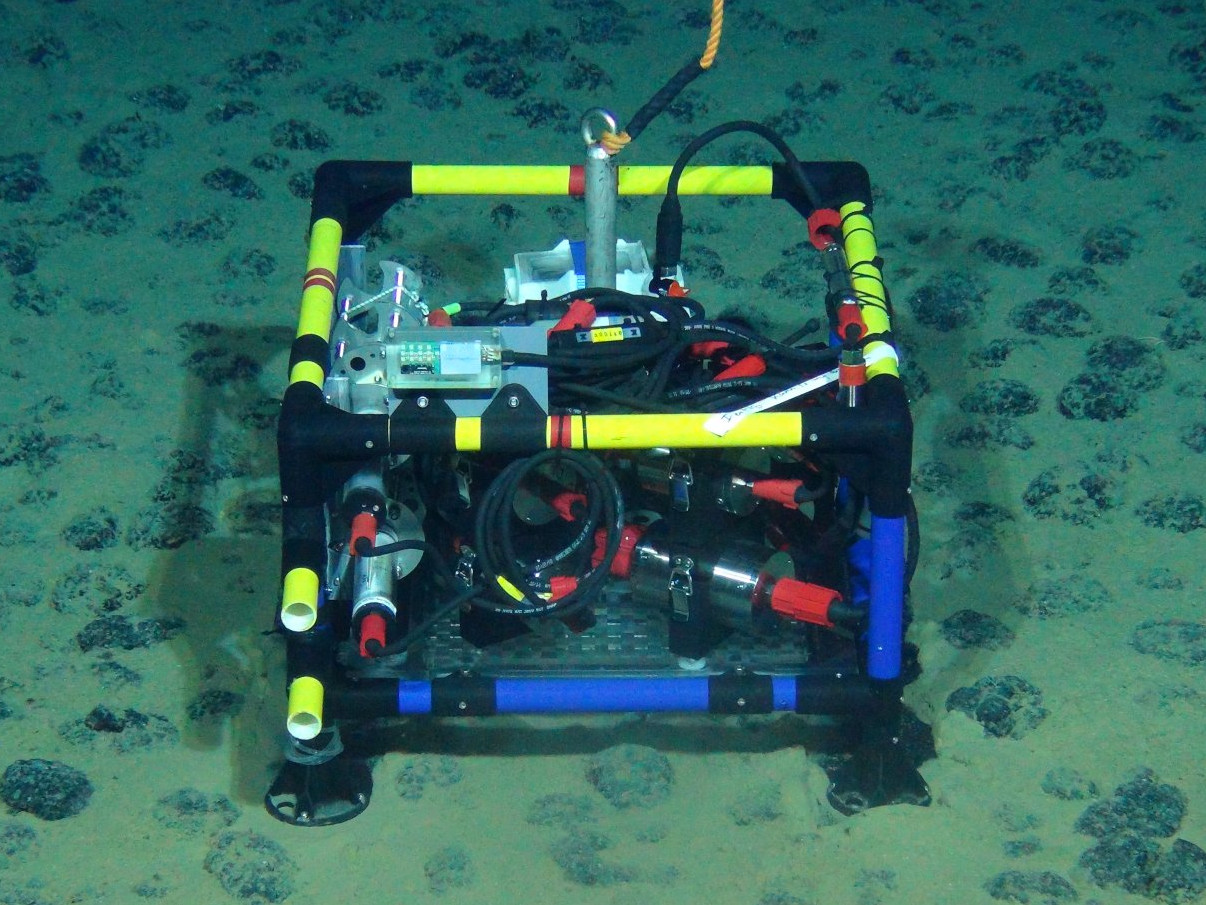Benthic Chambers
What are Benthic Chambers?
The term “benthic” comes from the ancient Greek word “benthos”, which refers to the floor zone of a body of water. In the sea (and all other waters), the floor zone forms the boundary between two very important areas: the water and the sediment. Even though these two areas are quite different, they must be considered together in order to fully understand the heterogeneous ecosystem in the ocean. As the interface between floor and water, the seafloor is one of the most important transition areas for the exchange of dissolved substances (e.g. nutrients, oxygen, and methane).
At the seafloor, a benthic chamber allows on-site measurements of the exchange rates of these substances between the floor and the water column. Measurements are taken in space (i.e. which substances go where and in what quantity) as well as duration (i.e. how long the exchange process take). These measurements include all relevant transport processes of dissolved substances (e.g. diffusion, advection, and transport via animals).
How does a Benthic Chamber work?
Our benthic chambers consist of a fixed frame to which the following devices are attached: one to two titanium cylinders, a round chamber made of Plexiglas, and a sampler with five syringes and an injection device. The titanium cylinder(s) contain(s) the electronics, a computer for data collection, the control device for the syringes, and two sensor amplifiers.
The data is then collected in situ – directly on the seafloor. Autonomous underwater vehicles transport the benthic chambers to the designated sampling site. The chamber is then partially driven into the seafloor until it is filled with sediment on the one side and floor water on the other. A one-way valve on the lid of the chamber releases the excess water caused by inserting the chamber into the sediment so that the device can be placed as gently as possible. The measurements start when the sediment clouds caused by the devices have settled and everything is once again calm.
The changes in the concentrations of dissolved substances in the sediment and water are then continuously measured in order to obtain a time line. The syringes on the device make it possible to track the exchange of certain dissolved substances (e.g. oxygen and methane). To do this, water samples are taken from the surrounding water with the syringes and fed into the chamber via hoses and the injection device. In the chamber, the concentrations of chemical elements can be measured continuously – just like the pH value. This is made possible by sensors attached to the lid of the chamber. The proportion of other components (e.g. nutrients) is determined by repeated measurement within a defined period of time in the enclosed water. These samples and sensor readings taken during the incubation period allow the assessment of total fluxes and transport rates between floor and water.
The Benthic Chamber in action
The benthic chambers are used, for example, in the JPIO project MiningImpact2 “Environmental impacts and risks of deep-sea mining” as well as in the project BENTHIMPACT “Effects of manganese nodule mining on benthic megafauna and microbial communities and their functions”.
As part of these research projects, scientists frequently travel to the DISCOL area in the tropical East Pacific – about 3000 km off the coast of Peru. In 1989, German researchers ploughed up the seafloor of a manganese nodule area at a water depth of 4000 m over an area with a diameter of more than 3.5 km with a harrow in order to simulate mining. For example, on a 2015 expedition (Expedition SO242), it was investigated whether and how the abundance, diversity, and density of micro-organisms in the area have changed in the long term. The focus was also on what the disturbance means in the long term for the carbon cycle and food web of this habitat. The benthic chambers were used as part of these investigations and provided valuable geochemical data. For example, it was shown that after 26 years, the biogeochemical conditions in the DISCOL area have been sustainably altered.
Another expedition to the DISCOL area took place in 2018. Once again, the microprofiler was on board. It also travelled with the device to the Clarion-Clipperton Zone in the Eastern Pacific in 2019. It will be used there again in 2021.
Results of the SO242 expedition can be read here:
- Vonnahme T.R., Molari M., Janssen F., Wenzhöfer F., Haeckel M., Titschack T., Boetius A. (2020) Effects of a deep-sea mining experiment on seafloor microbial communities and functions after 26 years. Science Advances. DOI: 10.1126/sciadv.aaz5922
- Daniëlle S.W. de Jonge, Tanja Stratmann, Lidia Lins, Ann Vanreusel, Autun Purser, Yann Marcon, Clara F. Rodrigues, Ascensão Ravara, Patricia Esquete, Marina R. Cunha, Erik Simon-Lledó, Peter van Breugel, Andrew K. Sweetman, Karline Soetaert, Dick van Oevelen (2020): Abyssal food-web model indicates faunal carbon flow recovery and impaired microbial loop 26 years after a sediment disturbance experiment, Progress in Oceanography, October 2020. DOI: 10.1016/j.pocean.2020.102446
Or also in press releases:
Technical details
Dimensions of the central chamber: Diameter of 19 cm, height of 10–20 cm; encloses an area of 284 cm2 with floor water
Capacity: 4–6 l
Electrochemical sensors: Oxygen (O2), hydrogen sulphide (H2S), pH value
Optical sensor: Oxygen (O2)
Syringe samples: Five syringes with a volume of 50 ml
Operating time: maximum 34 hours with a small-capacity deep-cycle battery
Operating depth: up to 6000 m
Who uses the Benthic Chambers?
The benthic chambers are mainly used by the HGF MPG joint research group for deep-sea ecology and technology.
Please direct your queries to
Scientist
HGF MPG Joint Research Group for Deep-Sea Ecology and Technology
MPI for Marine Microbiology
Celsiusstr. 1
D-28359 Bremen
Germany
|
Room: |
1337 |
|
Phone: |

Scientist
HGF MPG Joint Research Group for Deep-Sea Ecology and Technology
MPI for Marine Microbiology
Celsiusstr. 1
D-28359 Bremen
Germany
|
Room: |
1338 |
|
Phone: |



